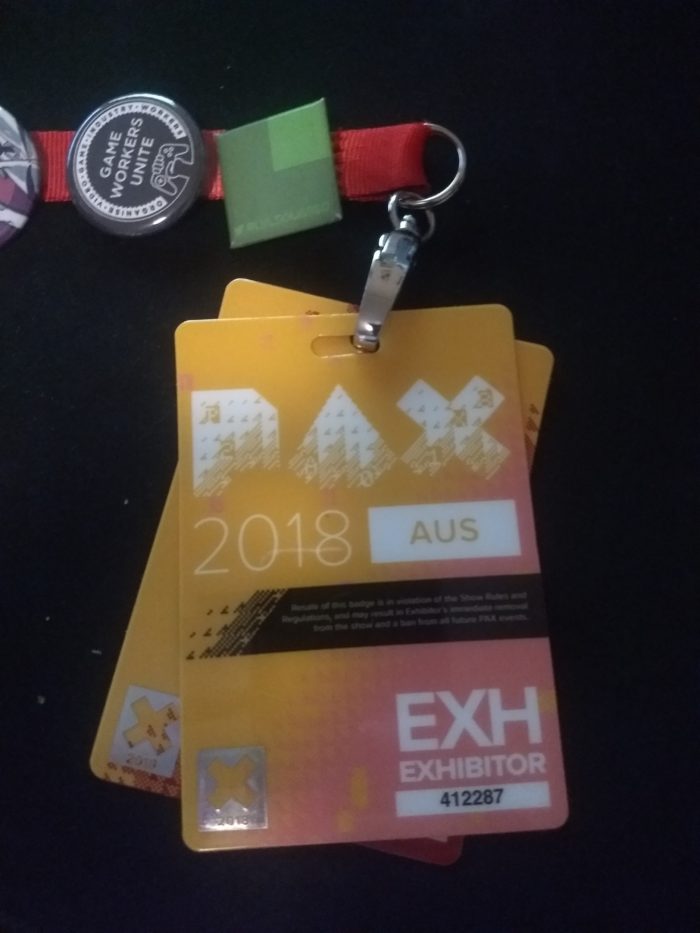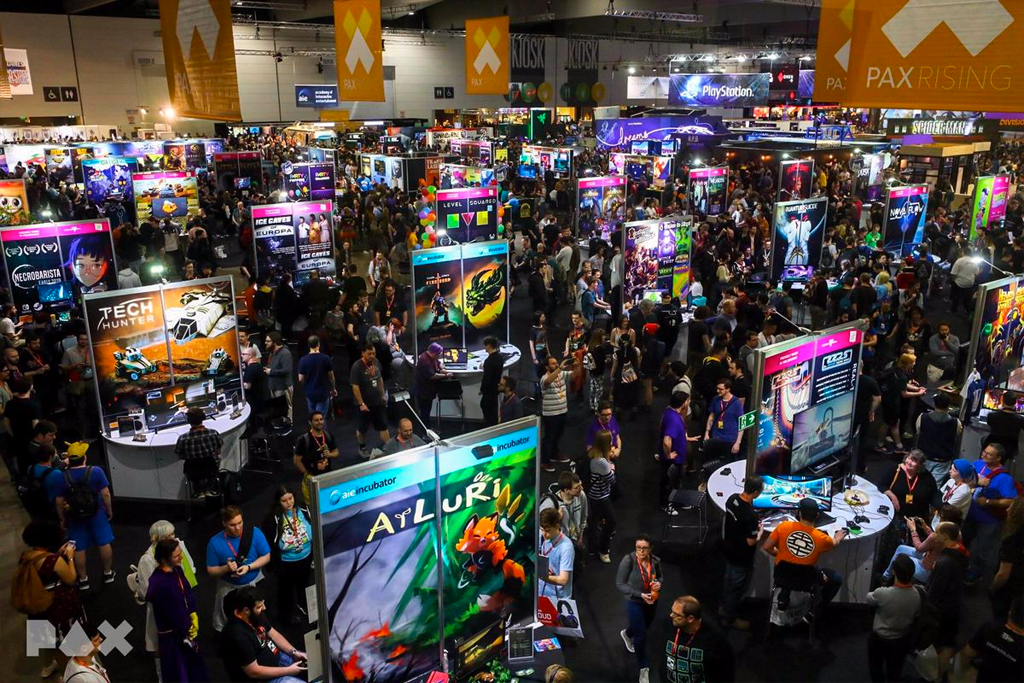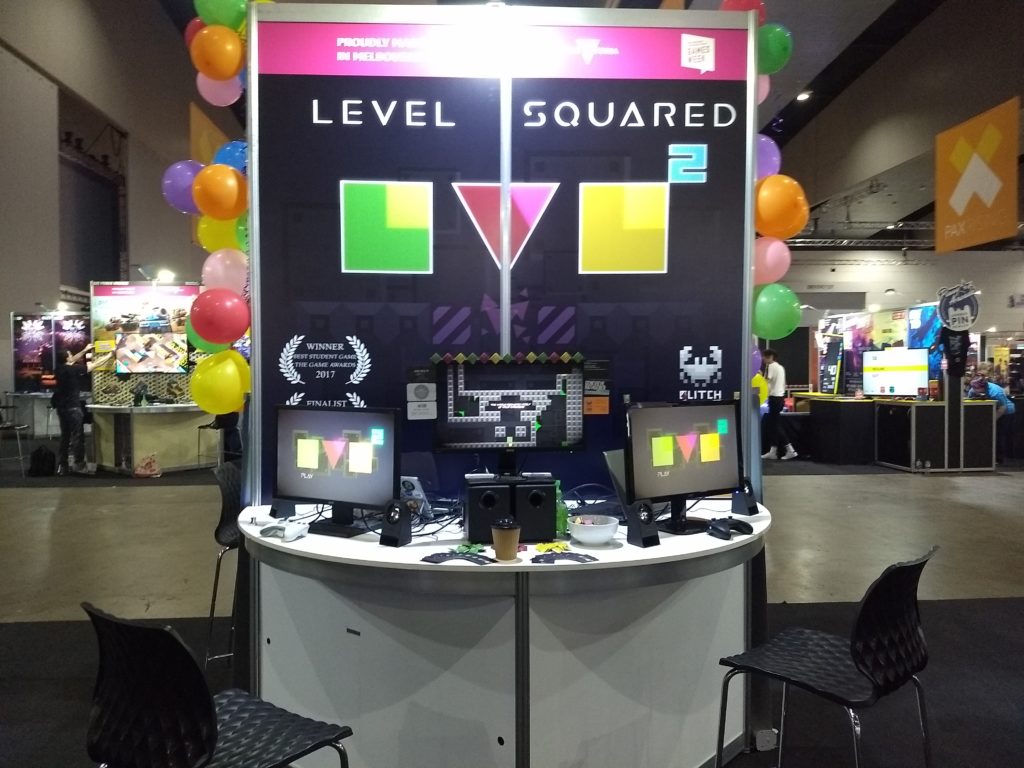Hello again. Welcome to part 2 of this PAX Australia post-mortem. This week: our day-to-day operations, running the booth and bump out.
The three days of PAX all ran in pretty similar ways, so I won’t go into any specific day’s events.
I arrived at the Convention Centre by around 9am each morning, bringing along our two Exhibitor passes.
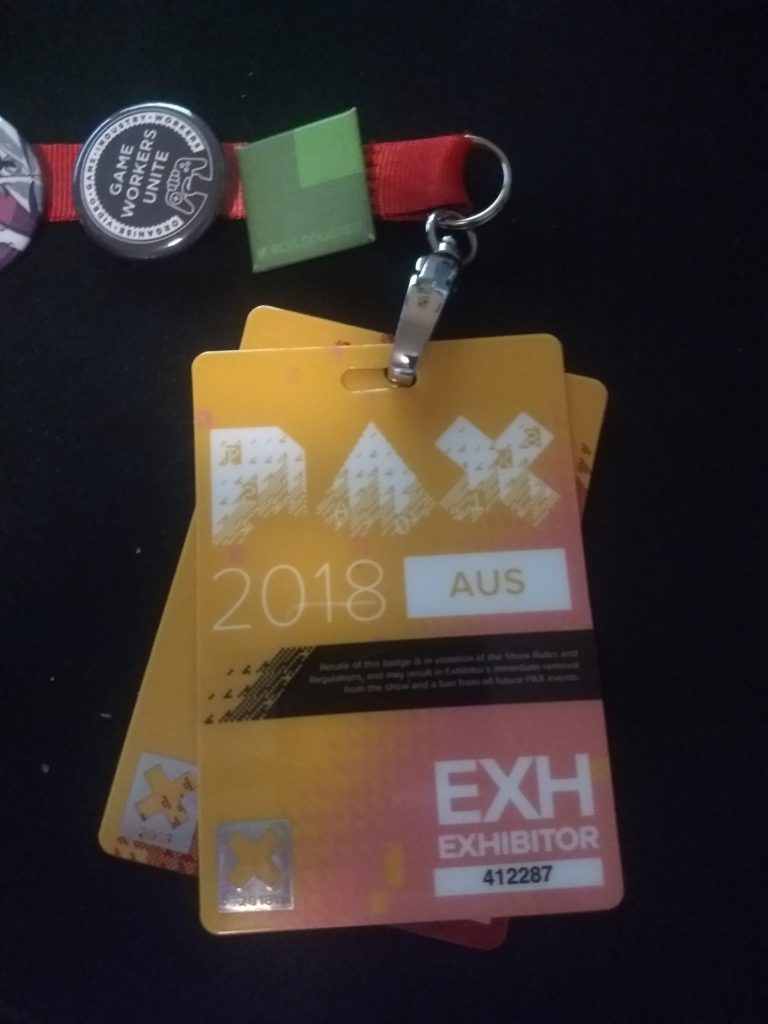
Once inside, I would pull the two laptops we were using out from under our booth (where they were locked away overnight), plug them back in to monitors, audio and power and power them up. I also connected the controller to each computer, after changing in fresh batteries.
Then I got Level Squared running on each computer and played through a couple of times on each to make sure that everything was working properly and set up right.
By around 9.30 the other team members who were rostered on for the morning shift would usually have arrived, and we would finish putting out the pins and lollies and business cards and so on that we had ready to hand out to anyone who showed interest.
While all this was going on, the crowd would be building up within the queue room next door. In previous years the PAX Rising section was located in around the middle of the exhibition hall, but this year it had been moved to be right next to the entrance from the queue hall, so it was the first thing that people saw as they entered.
It also meant that we could hear the noise from the queue as we were setting up. And they were a noisy bunch.
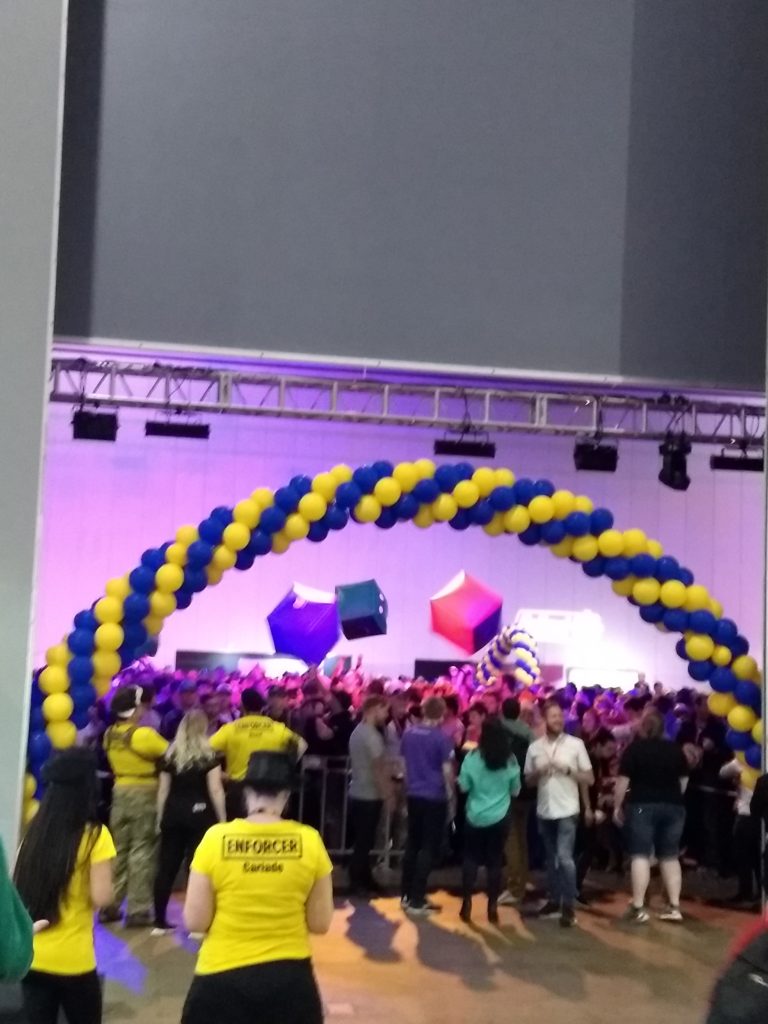
But here’s the thing about the people who get in early to get to the front of the queue – very few of them are there to see the indie section. People who arrive and line up early are there to get into lines for AAA games or to get tables in the tabletop section. So the first half hour or so after the doors open was a stream of people rushing past your booth to get further into the hall.
It was a bit of an anti-climax really.
BUT, once that initial rush had passed, people started to filter through more slowly. And from then on our booth was pretty much constantly busy. As I said last week, we had two computers running Level Squared, and they were in use basically the whole time. And there were usually at least a couple of people standing and watching as well.
Working the booth was pretty non-stop. There were always people passing by to talk to and engage with and try to get to play. One big difference I noticed from last year when we were part of the Swinburne booth was the increased interest we had from people.
Last year we were seen as a student project so a lot of people dismissed us out of hand and had no interest in seeing what we had on offer. Whereas this year we were in among all the other proper indie games and seen as a ‘real’ game. This also meant that I didn’t have to do anywhere near as much work to get people to stop and check us out which made me considerably more comfortable. I am not a fan of the hard sell and really don’t like doing it myself.
Our timetable for staffing the booth was set up so that there were always two people there, and that no-one was rostered on for more than half a day at a time and no more than two shifts across the three days.
This was very good because after about four hours of talking to people my brain would start to turn to mush so the fact that we were able to get away from the booth for a good section of the day was appreciated.
We had a few things to give away at our booth as well, badges, lollies and business cards. We had repeated our orders from the previous year for pins and cards, thinking that we were going to need around the same amount. This was quickly proven incorrect.
By the end of the first day we were about half way through the supply of badges, and we were already getting low on business cards. Fortunately we still had plenty of cards from last year, but it was clear that we had ordered nowhere near enough of either to address the demand. This was probably exacerbated by the fact that we were giving away everything for free.
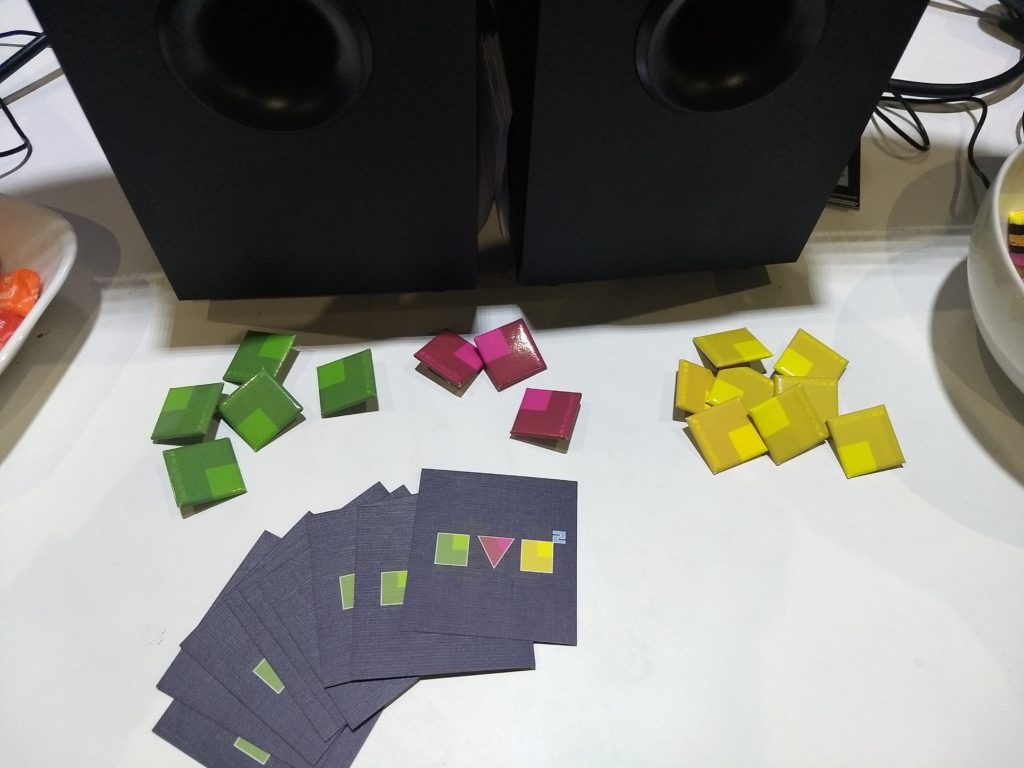
We made this decision because we didn’t have the public precence to sell our goods, and we didn’t have any of the needed infrastructure set up to process payments. I think giving things away was the right decision, we just needed more of everything to address the demand. Lesson learned.
And at the end of the day, once the Enforcers had shoo-ed everyone out of the hall, we would shutdown and unplug the computers, store the computers beneath the booth and generally tidy up the desk. Then go home and take it easy before the next day.
I generally skipped all of the evening events during PAX. While there were plenty I would have liked to attend, I thought it was a better idea to take it easy during the night to ensure I was ready to go and deal with anything that might crop up during the day. This was probably over anxious, but I’m OK with that.
Next week: What we learned and what I would do differently next time – if there is a next time?
